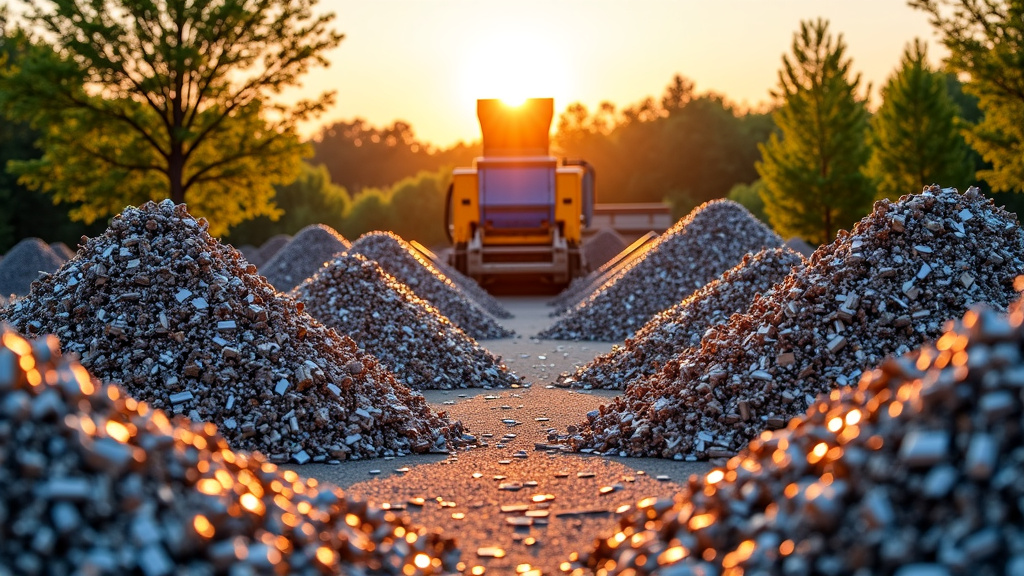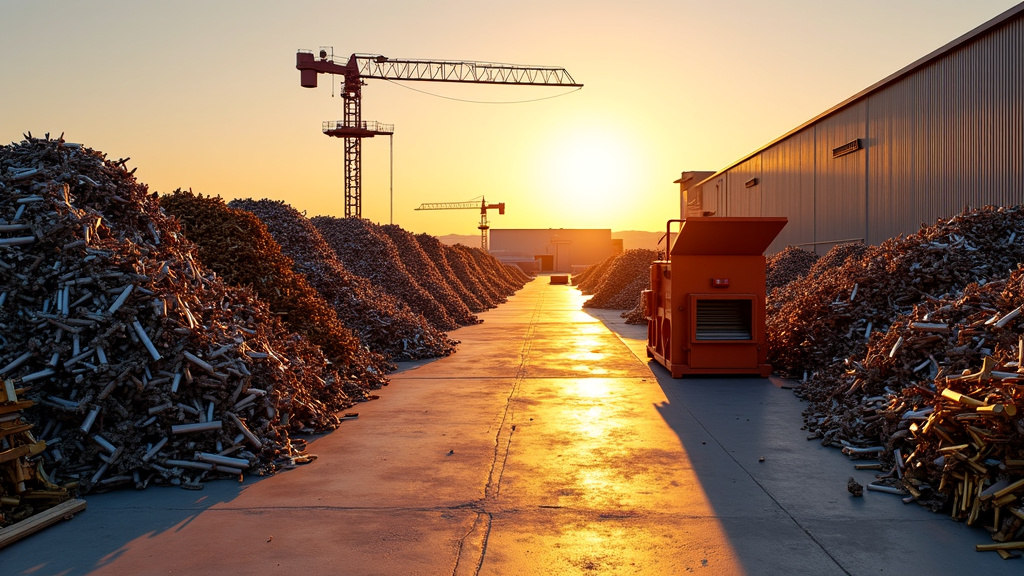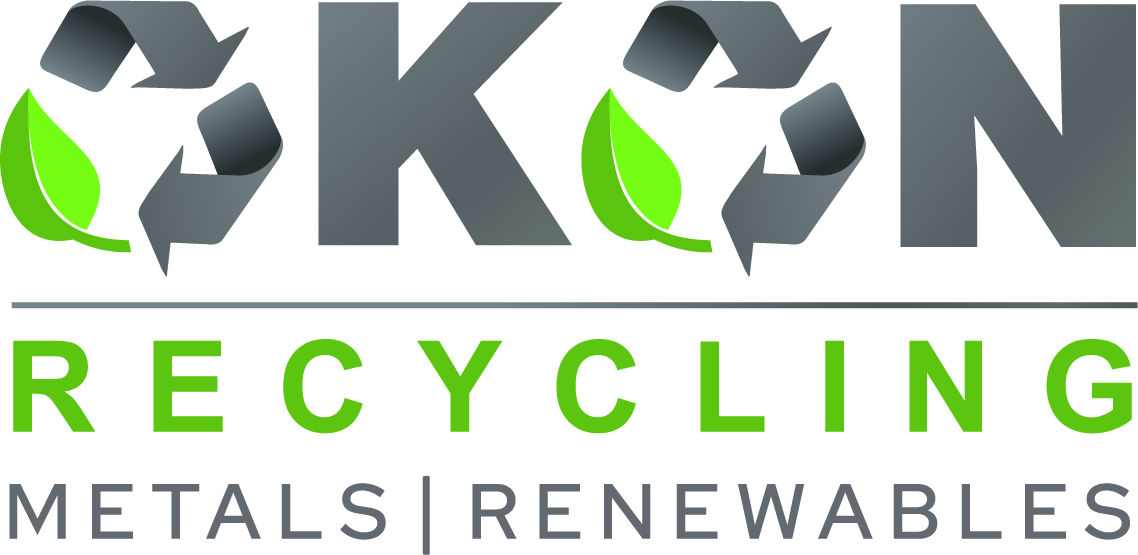5901 Botham Jean Blvd, Dallas, TX 75215
Scrap Metal Salvage Yards: A Solution for Waste Management
April 10, 2025Did you know the United States generates over 250 million tons of scrap metal annually? This figure highlights the crucial role of scrap metal salvage yards in waste management. These facilities act as sustainability heroes, diverting large quantities of metal from landfills and repurposing what would otherwise be waste.
Scrap metal salvage yards are more than junkyards; they are advanced recycling centers integral to the circular economy. By collecting, processing, and redistributing various metals, these facilities significantly contribute to resource conservation and reduce the need for raw material extraction. This process helps preserve our planet’s finite resources and cuts the energy consumption associated with mining and refining new metals.
The environmental impact of scrap metal salvage yards extends beyond waste reduction. According to the Institute of Scrap Recycling Industries, recycling metal can reduce greenhouse gas emissions by 300 to 500 million tons, equivalent to removing millions of cars from the road. This highlights the significant impact these salvage yards have on combating climate change.
The Scrap Metal Recycling Process

The journey of scrap metal from waste to resource is a fascinating process combining technology, efficiency, and environmental stewardship. We will explore the key steps involved in transforming old metal into new products and how this process contributes to a sustainable future.
Collection: The First Step in Recycling
The recycling process begins with collection, a crucial phase that lays the foundation for effective metal recovery. Scrap yards and recycling centers receive metal from various sources, including construction sites, industrial facilities, and household cleanouts.
During collection, metals are sorted into broad categories such as ferrous (containing iron) and non-ferrous metals. This initial sorting streamlines the subsequent steps in the recycling process.
Many recycling facilities use specialized containers for different metals, ensuring materials remain in good condition during transport and storage. This careful handling preserves the quality of the scrap, maximizing its recycling potential.
Sorting: Precision in Separation
Once collected, the scrap metal undergoes detailed sorting to ensure the purity and quality of the recycled metal. Advanced technologies play a significant role in modern sorting methods.
Magnetic separators efficiently sort ferrous metals from non-ferrous ones. Eddy current separators further separate non-ferrous metals like aluminum from other materials.
Manual sorting by trained professionals complements automated systems, ensuring even small amounts of valuable metals are recovered. This meticulous approach maximizes recycling yield and minimizes waste.
Shredding: Breaking Down for Better Processing
After sorting, the scrap metal is ready for shredding, transforming large metal pieces into smaller, manageable components. Industrial shredders, capable of handling everything from small appliances to car bodies, are the workhorses of this stage.
Shredding increases the surface area of the metal, making subsequent melting more efficient. It also helps in further separating materials attached to the metal, such as plastic or rubber.
The shredded metal, now reduced to small pieces, is easier to transport and process, streamlining the entire recycling operation. This step is crucial for preparing the metal for the intense heat of the melting phase.
Melting and Purification
The heart of the recycling process occurs in large furnaces where the shredded metal is melted down. Different metals require varying heat levels, with some furnaces reaching temperatures over 1,000 degrees Celsius.
During melting, impurities are removed through various methods. Electrolysis is often used to purify metals like copper, ensuring a high-quality end product. This purification is crucial for producing recycled metal that meets industry standards.
The molten metal is then poured into molds or formed into sheets, ingots, or other shapes depending on its intended use. This versatility allows recycled metal to be easily integrated into various manufacturing processes.
The Environmental and Economic Impact
The scrap metal recycling process offers significant environmental benefits. It reduces the need for mining virgin ores, conserves energy, and minimizes greenhouse gas emissions. Recycling aluminum, for example, uses only about 5% of the energy required to produce new aluminum from raw materials.
Economically, metal recycling contributes billions of dollars to the global economy annually. It creates jobs, reduces manufacturing costs, and helps conserve valuable natural resources. As demand for metals grows, the importance of efficient recycling processes becomes increasingly critical.
By understanding and supporting the scrap metal recycling process, we all contribute to building a more sustainable and resource-efficient world. Every piece of metal recycled is a step towards a cleaner, greener future.
Environmental Benefits of Scrap Metal Salvage

Scrap metal salvage yards play a crucial role in environmental conservation, providing benefits beyond waste reduction. By diverting metals from landfills, these facilities are key players in combating climate change and resource depletion.
Explore the significant environmental advantages of scrap metal recycling, starting with its impact on landfill waste. Each year, millions of tons of metal objects would end up in our already overburdened landfills if not for recycling efforts. Scrap metal recycling significantly reduces landfill waste, preserving space and preventing potential soil and water contamination from discarded metals.
The benefits extend further. Recycling metals is a powerhouse of energy conservation. Consider aluminum, a prime example of efficient metal recycling. Recycling this material saves 95% of the energy needed to produce new aluminum from raw bauxite ore. Copper recycling saves about 85% of the energy required for primary production.
| Metal | Energy Savings (%) |
| Aluminum | 95% |
| Copper | 85% |
| Steel | 74% |
Reducing Greenhouse Gas Emissions
The energy savings from metal recycling directly reduce greenhouse gas emissions, significantly lowering our carbon footprint. For every ton of steel recycled, nearly 2,000 pounds of CO2 emissions are avoided, equivalent to a car’s emissions over a 600-mile journey.
Aluminum recycling goes further. Recycling one ton of aluminum cans prevents about 9 tons of CO2 emissions. This is like taking two passenger cars off the road for a year. These numbers are a compelling call for increased metal recycling efforts.
The environmental benefits of scrap metal salvage also extend to conserving our planet’s finite resources. Mining for virgin ore is environmentally destructive, often causing deforestation, habitat destruction, and water pollution. Recycling metals reduces the need for new mining operations, helping preserve ecosystems and biodiversity.
Conserving Valuable Resources
The resource conservation from metal recycling is substantial. For every ton of steel recycled, we save 2,500 pounds of iron ore, 1,400 pounds of coal, and 120 pounds of limestone. This means fewer raw materials are extracted, preserving natural landscapes and reducing the environmental impact of extraction processes.
Water conservation is another benefit of metal recycling. Primary metal production is water-intensive, but recycling significantly cuts water usage. Recycling metals can reduce water pollution by 76% and water use by 40% compared to primary production methods. In a world where water scarcity is a growing concern, these savings are invaluable.
The environmental benefits of scrap metal salvage create a virtuous cycle. By reducing energy consumption, greenhouse gas emissions, and the need for raw material extraction, we are paving the way for a more sustainable future. It’s a powerful reminder that some of our most effective environmental solutions may be right in front of us, perhaps even in that pile of scrap metal in your garage.
How Okon Recycling Can Help with Scrap Metal Salvage Yards
In the dynamic field of scrap metal recycling, Okon Recycling stands as a leader in expertise and innovation. With over a century of experience, this Dallas-Fort Worth based company offers a comprehensive suite of scrap metal management services that set the industry standard.
Central to Okon’s operations is a commitment to environmental stewardship that transcends mere buzzwords. Their state-of-the-art facilities maximize recycling potential while minimizing waste. It’s a delicate balance, mastered through years of dedicated service.
What distinguishes Okon Recycling is their ability to manage both small and large-scale projects. Whether you’re a homeowner with old appliances or a large industrial operation with tons of scrap metal, Okon’s team has the expertise and equipment to meet your needs efficiently. This versatility ensures no project is too big or too small for their skilled professionals.
Customized Solutions for Every Need
One of Okon Recycling’s strengths is their customized approach. They understand that each client’s needs are unique, and they’ve built their service model around this principle. Their team collaborates closely with individuals, commercial entities, and industries to develop tailored recycling solutions that address specific challenges and goals.
For individuals, this might mean providing convenient drop-off options or assistance with sorting metals. For commercial clients, Okon integrates seamlessly into existing waste management processes, optimizing the recycling workflow without disrupting operations. For industrial partners, they offer large-scale solutions for complex recycling challenges.
This level of customization maximizes value. By tailoring their approach to each client’s needs, Okon ensures every piece of scrap metal is processed efficiently and profitably. Clients benefit from top dollar for their scrap while contributing to a more sustainable future.
Choosing the Right Scrap Metal Salvage Yard

Environmental compliance should be a priority. A responsible salvage yard will have measures in place to minimize environmental impact, including proper handling of hazardous materials and efforts to reduce emissions during the recycling process.
When it comes to experience and reliability, few can match Okon Recycling’s century-long presence in the industry. Their commitment to innovative, value-based recycling solutions has made them a trusted choice for scrap metal recycling in the DFW area and beyond. With a focus on sustainability and customer service, they exemplify the qualities to look for in a recycling partner.
Ultimately, choosing the right scrap metal salvage yard requires careful consideration of multiple factors. By prioritizing certifications, pricing transparency, equipment quality, and environmental compliance, you can ensure a partnership that benefits both your business and the planet.
For those in the Dallas-Fort Worth area seeking a reliable recycling partner, consider reaching out to Okon Recycling at 214-717-4083. Our longstanding expertise and commitment to innovation make them an excellent choice for all your scrap metal recycling needs.
